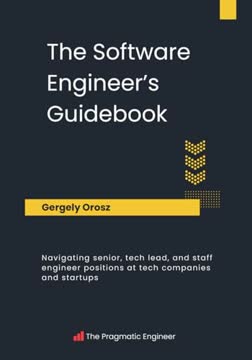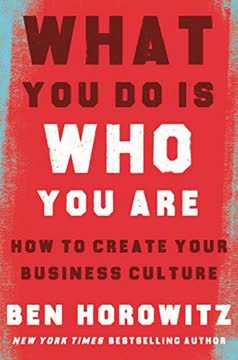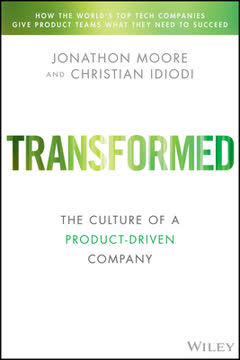Key Takeaways
1. Create organizational values that are reversible, applicable, and honest
Useful values are reversible, applicable, and honest.
Reversibility ensures values can guide behavior by presenting viable alternatives. For example, Uber's "Make magic" emphasized perfecting products before release, while its reverse "Ship early and often" is equally valid for other companies. Applicability means values can be used in complex scenarios, like Stripe's "Seek feedback" which guides engineers to gather input before completing work. Honesty requires values to accurately reflect current behavior, not just aspirations. This prevents a disconnect between stated values and actual practices.
To create effective values:
- Test for reversibility by attempting to rewrite them with an opposite perspective
- Ensure they can be applied to real decision-making situations
- Align them with existing behaviors rather than purely aspirational goals
- Integrate values into hiring, onboarding, and promotion processes
- Regularly reinforce and highlight value-aligned accomplishments
2. Measure engineering for planning, operations, optimization, and inspiration
Start by measuring for yourself.
Measure to plan: Track shipped projects and their impact to support prioritization and align with stakeholders. This helps in deciding what to deliver in a given timeframe and represents engineering's full scope of work.
Measure to operate: Monitor execution quality through:
- Number of incidents and downtime
- API and website latency
- Engineering costs normalized against core business metrics
- User ratings and product onboarding success rates
Measure to optimize: Use frameworks like SPACE or Accelerate to understand and improve engineering productivity. Start with a developer productivity survey if full instrumentation is too heavy initially.
Measure to inspire: Maintain a list of transformational technical investments that turned impossible tasks into routine operations. Use these to energize stakeholders and demonstrate engineering's crucial role in business success.
3. Align engineering metrics with stakeholder needs and business goals
The biggest mistake to avoid is asking your CEO to measure engineering through your Metrics to optimize.
CEO and Board metrics: Focus on engineering's contribution to business strategy, not day-to-day operations. Use planning or operational measures that demonstrate execution against concrete goals.
Finance metrics:
- Headcount trends vs. budget
- Vendor costs vs. budget
- Cost capitalization justification
Strategic peer organizations: Use planning metrics to align on maximizing engineering's business impact.
Tactical peer organizations: Agree on specific, concrete numbers that represent cross-organizational needs, such as ticket resolution times for Customer Success.
4. Start with simple, actionable measurements and iterate over time
The secret of good measurement is actually measuring something.
Avoid analysis paralysis: Start with quick, easy-to-implement measurements rather than trying to measure everything perfectly from the beginning. The primary risk is measuring nothing while attempting to measure everything.
Iterative approach:
- Begin with readily available data
- Focus on metrics that inform decision-making
- Gradually expand and refine your measurement system
- Regularly review and adjust metrics based on their usefulness
Build trust: Consistently measuring and reporting, even on simple metrics, builds credibility with stakeholders and provides a foundation for more sophisticated measurements later.
5. Balance technical debt and innovation through strategic planning
Maintain a list of technical investments that turned something impossible into something so obvious that it isn't really worth mentioning.
Technical debt management:
- Regularly assess and prioritize technical debt
- Allocate dedicated time for addressing critical issues
- Communicate the long-term benefits of debt reduction to stakeholders
Innovation initiatives:
- Set aside resources for exploring new technologies and approaches
- Encourage controlled experimentation through "innovation time" or hackathons
- Evaluate potential innovations based on their alignment with business goals
Strategic planning:
- Include both debt reduction and innovation in annual planning cycles
- Use a balanced scorecard approach to ensure focus on multiple priorities
- Regularly review and adjust the balance based on business needs and market conditions
6. Foster a culture of continuous learning and improvement
Approach conflict with curiosity.
Encourage open communication:
- Create safe spaces for discussing challenges and failures
- Implement blameless post-mortems after incidents
- Promote cross-team knowledge sharing through tech talks and documentation
Invest in skill development:
- Provide resources for ongoing learning and professional development
- Support attendance at conferences and industry events
- Implement mentorship programs to facilitate knowledge transfer
Embrace feedback:
- Regularly solicit feedback from team members at all levels
- Act on constructive feedback to demonstrate its value
- Celebrate improvements and learnings from both successes and failures
7. Develop an effective engineering strategy aligned with company objectives
You can't really optimize only for your team if you're in a monolithic service without causing significant problems elsewhere.
Strategy components:
- Clear vision and mission statements
- Alignment with overall business strategy
- Specific, measurable goals and objectives
- Roadmap for technology adoption and evolution
Implementation steps:
- Assess current state and identify gaps
- Define strategic priorities and initiatives
- Create action plans with clear ownership and timelines
- Establish regular review and adjustment processes
Stakeholder alignment:
- Collaborate with product, finance, and other key functions
- Communicate strategy clearly to all levels of the organization
- Regularly report progress and adjust based on feedback
8. Optimize resource allocation and capacity creation
Create capacity (rather than capture it).
Capacity creation strategies:
- Focus on increasing overall team productivity
- Invest in automation and developer tooling
- Implement efficient onboarding processes for new hires
Resource allocation:
- Align team structures with business priorities
- Use data-driven approaches to identify bottlenecks and opportunities
- Implement flexible resource models to adapt to changing needs
Cross-functional collaboration:
- Foster a "first team" mindset among leaders
- Encourage resource sharing and knowledge transfer between teams
- Align incentives to promote organization-wide success
9. Implement build vs. buy decisions based on core competencies
Default to vendors unless it's our core competency.
Evaluation criteria:
- Alignment with core business competencies
- Total cost of ownership (implementation, maintenance, and extension)
- Time to market and opportunity cost
- Scalability and flexibility of solutions
Decision-making process:
- Clearly define requirements and success criteria
- Evaluate available vendor solutions
- Assess internal capabilities and resources
- Consider long-term implications and strategic fit
- Make a data-driven decision based on all factors
Implementation considerations:
- Plan for integration and customization needs
- Establish clear vendor management processes
- Regularly reassess decisions as business needs evolve
10. Approach conflict with curiosity to resolve information asymmetry
One of my foundational beliefs is that most professional conflict between reasonable people is driven by asymmetric information.
Conflict resolution strategies:
- Ask open-ended questions to uncover underlying issues
- Practice active listening to understand all perspectives
- Seek out additional context and information before making judgments
Information sharing:
- Implement transparent communication practices
- Encourage cross-functional knowledge sharing
- Use collaboration tools to make information easily accessible
Building empathy:
- Promote job shadowing or rotation programs
- Facilitate team-building activities to improve relationships
- Recognize and celebrate diverse perspectives and approaches
By approaching conflicts with curiosity, teams can uncover valuable insights, improve decision-making, and foster a more collaborative work environment.
Last updated:
Review Summary
The Engineering Executive's Primer receives mostly positive reviews, with readers praising its practical, straightforward approach to executive leadership in tech. Many appreciate the rare insights into CTO responsibilities and the well-chosen chapter topics. Some criticisms include a lack of deep insights, overlap with the author's blog content, and occasional disjointedness between chapters. Readers value the book as a reference guide but note it may not be as engaging as Larson's previous works. Overall, it's considered a valuable resource for senior engineering leaders.
Similar Books










Download PDF
Download EPUB
.epub digital book format is ideal for reading ebooks on phones, tablets, and e-readers.





